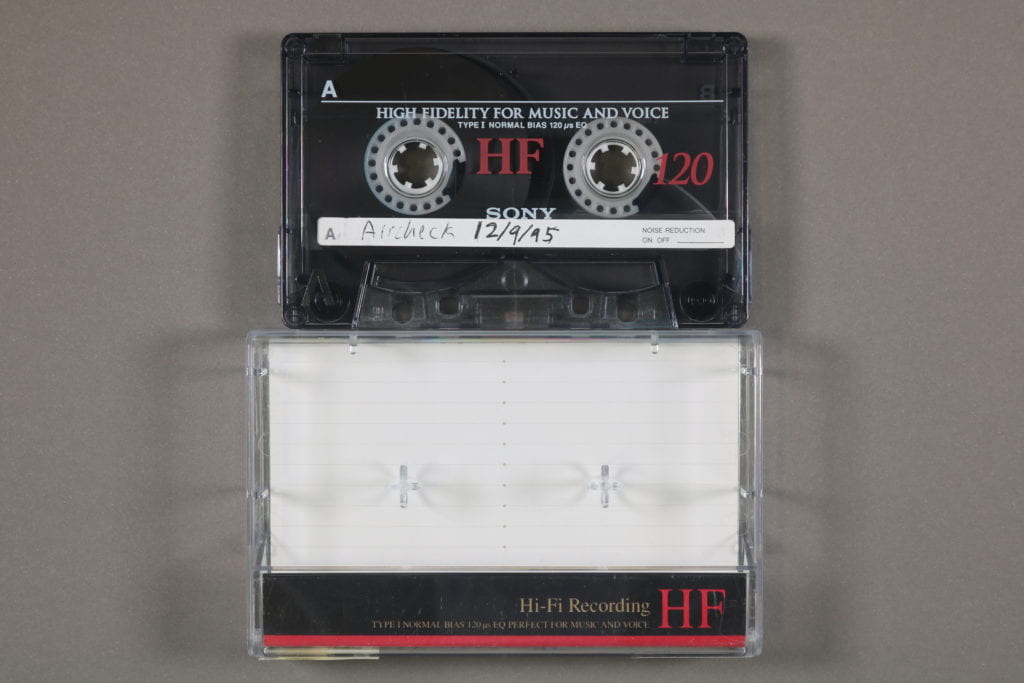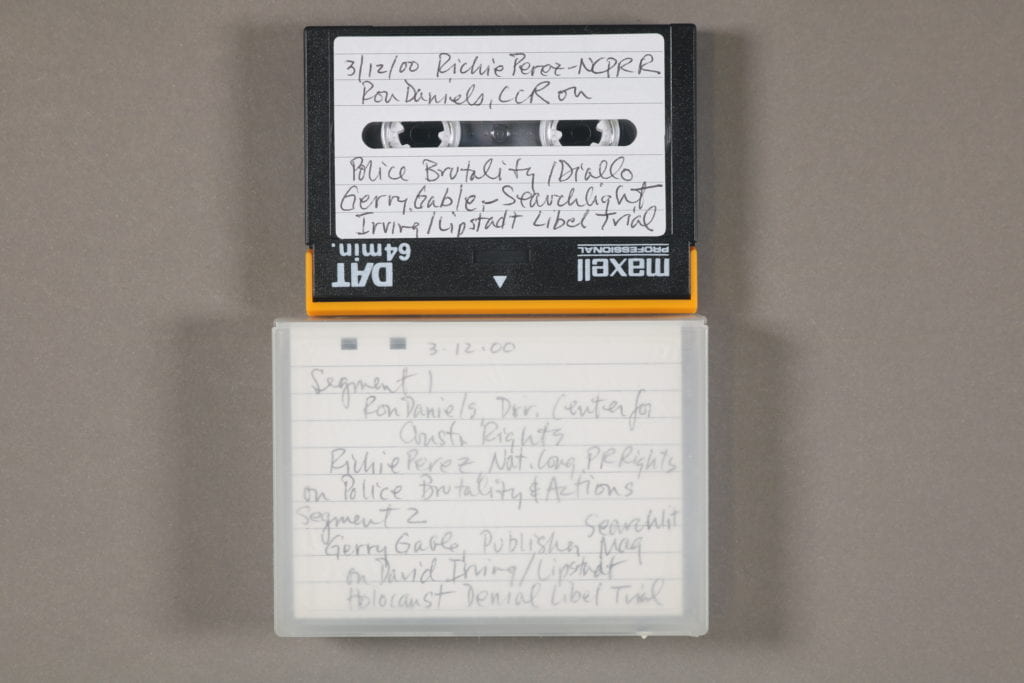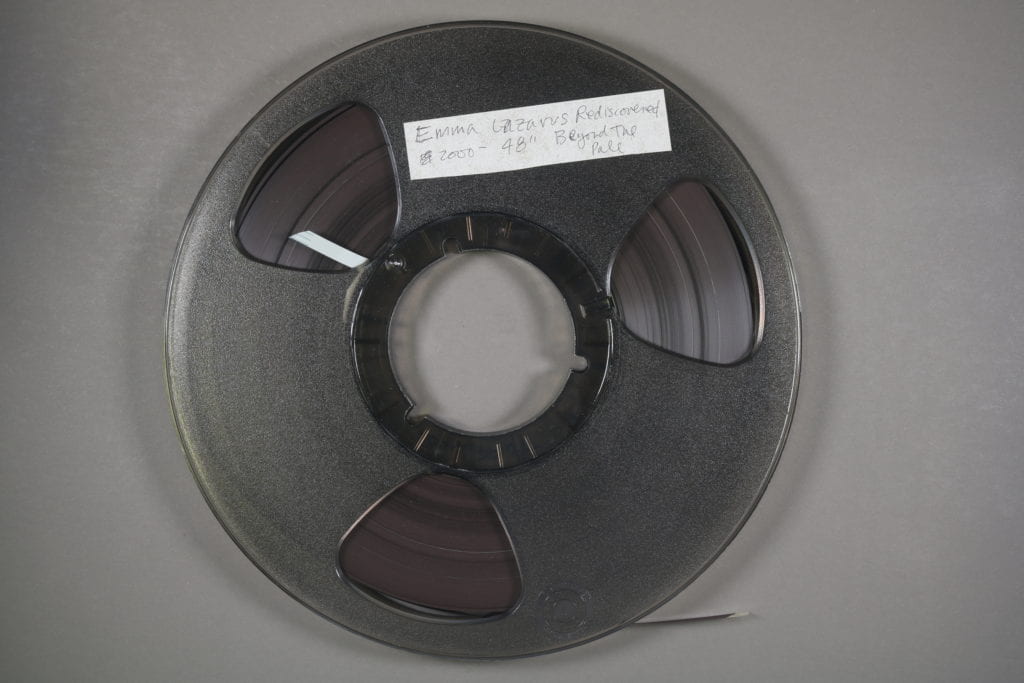Preserving Beyond the Pale: Experiments in Audio Quality Control
This post is written by Moving Image Archiving and Preservation (MIAP) graduate student, Alyosha Nowlin.
The Media Preservation Unit at New York University Libraries is currently working to preserve over 800 audio recordings of Beyond the Pale: The Progressive Jewish Radio Hour. Beyond the Pale was broadcast on WBAI/New York from 1995 – 2014. The program aired on Sundays from 12:00 – 1:00 pm, and investigated local, national, and international issues from a Jewish perspective. Sponsored by Jews for Racial and Economic Justice, Beyond the Pale featured guests from the arts, literature, and academia, and was produced by Esther Kaplan and Marilyn Kleinberg Neimark. Formats in this collection include 1/4 inch audio tape, audiocassette, and digital audio tape.
With support from the Council on Library and Information Resources Recordings at Risk grant program, the collection has been reformatted and will be available through the University’s finding aid when archival processing is complete. All files have now been delivered by the vendor, and will undergo quality control to ensure the success of each transfer prior to dissemination. Files are received from the vendor accompanied by a spreadsheet including notes, taken by the transfer technician, regarding the quality of each transfer.
In addition to these human observations, each file has undergone automated quality control analysis by a dedicated software program, AudioQC. This software is designed to evaluate each track, ensure compliance to a set of user-adjustable parameters, and indicate to the archivist any anomalies which may require further attention. These data are included in the spreadsheet alongside vendor notes, and an important stage in the quality control process is to assess and synthesize these human/machine observations while carefully listening to the content.
Because each tape format exhibits unique characteristics which impart subtle but important sonic nuances, the quality control process must be tailored to each specific format. In addition to their specific sonic qualities, these formats differ considerably in their manufacture, and each is prone to specific forms of degradation and error. For this reason, it is advisable to pause, reevaluate, and reconceive the quality control process when working with each new format. Not only must the technician listen differently, they must also interpret a modified set of vendor terms and software alerts.
The quality control process moves relatively slowly at first, as it is necessary to get acquainted with the program’s content and production style, which vary from tape to tape. While a tape plays, the quality control technician checks for warnings produced by AudioQC, and confirms whether these alerts are warranted. The technician also compares their own observations with those of the vendor, either confirming the notes or proposing alternative terminology.
Based on these assessments, the technician then decides whether to flag the item for further review, or pass it for dissemination. After sampling enough items, a certain quality standard emerges against which other items in the collection can be evaluated, and the process begins to move more quickly. This approach offers robust protection against future issues by ensuring not only that failed transfers are detected, but that any “healthy” tracks erroneously flagged by the software are allowed to pass.
Perhaps the greatest reward in what may seem, at first glance, to be a tedious task, is the inevitable discovery of content. Through the din of fragmented words and music sometimes emerge patterns of meaning, and if one listens closely, there is sometimes a poetry to this arbitrary juxtaposition. A random factor is always fun!
Some noteworthy tapes found during quality control processing include:
Fig. 1: tam718_0038
Format: Audiocassette
Jenny Romaine, Sound Archivist at Yiddish Institute for Jewish Research (YIVO) brings selected musical recordings from YIVO archive to share with listeners and discuss with host.
Fig. 2: tam718_0488
Format: Digital Audio Tape
Commentary on the killing of Amadou Diallo by NYPD. Episode broadcast two weeks after officers were acquitted.
Fig. 3: tam_718_1003
Format: ¼ inch Audio Tape
Profile of poet Emma Lazarus, including a tape collage of various voices reading her poem The New Colossus.


